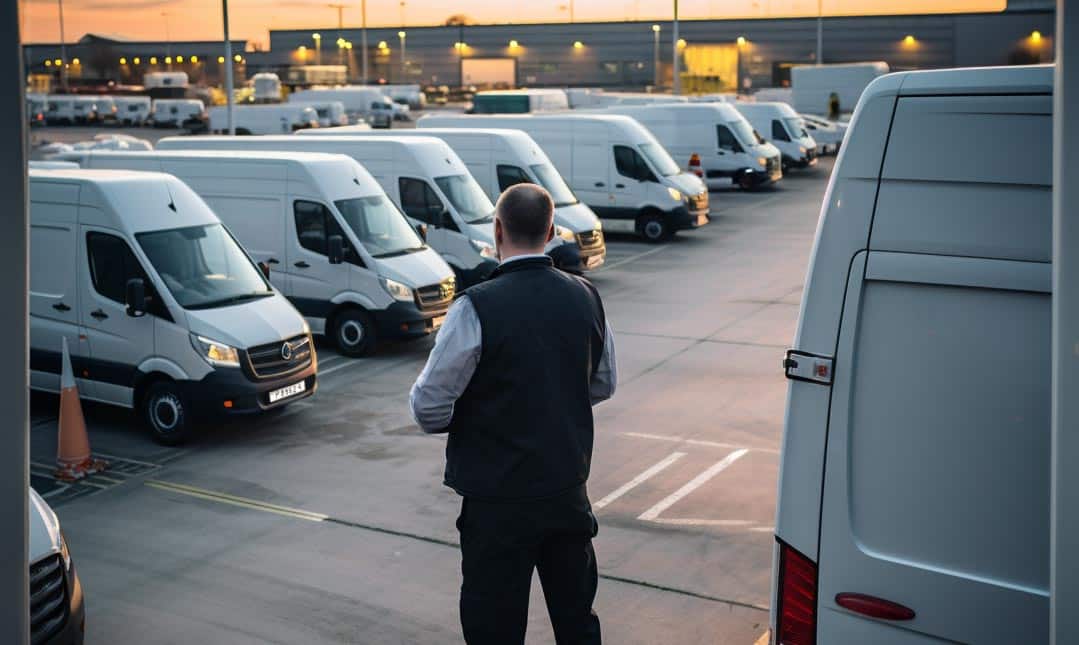How to streamline your electric fleet transition without becoming an EV expert
By Mike Brown, VP of Product
The shift towards electric vehicle (EV) fleets poses a monumental challenge for fleet managers and operators. Unlike managing traditional internal combustion engine (ICE) fleets, the EV transition journey comes with its own complexities involving new partnerships, managing internal relationships, energy management, charging infrastructure, and supplier coordination.
At VEV, we’ve seen fleets over-invest by as much as 20% during their transition due to inadequate planning. Fleet operators therefore need to think about the right mix of vehicles, chargers, and suppliers for their operation. It won’tjust be a one-for-one switch.
By partnering with a third-party provider that specialises in fleet electrification, companies can benefit from external expertise and guidance, making the transition smoother and more cost-effective.
Even industry giants like Amazon and DHL are using dedicated internal teams or trusted external partners to help navigate their transition.
Understanding the complexities of EV fleet transitions
Operators often underestimate the complexity of transitioning their ICE fleets to EVs. As such, there’s a lot of value to be gained from partnering with a dedicated provider that can provide expert advice and guidance.
As a fleet manager, it can be difficult to know whether to acquire vehicles first, or focus on implementing charging infrastructure, the ideal approach involves understanding both. And of course, to maximise productivity gains, drivers need to be trained properly, and vehicle routes need to be optimised.
That’s why it’s imperative that operators start with a plan that’s tailored to their company’s needs and net zero objectives and looks at all the constraints holistically. Without careful coordination, EV transitions can quickly become complicated. Inefficiencies can result in setbacks that end up costing companies more money overall.
Taking a long-term approach
The UK government’s plan for all vehicles to be zero emission by 2035 means that organisation have just over a decade to implement their transitions. However, fleet operators need to consider their strategy beyond the next few years and take a long-term view of how EVs will impact their journey to carbon reduction.
The EV transition isn’t merely a technological shift, but a challenge that requires a deep understanding of supply chain demand, the availability of components, and the ability to manage a diverse range of suppliers.
While original equipment manufacturers (OEMs) currently supply individual components freely. As an increasing number of companies transition their fleets, the busier OEMs will become.
In turn, this will impact the availability of component parts and companies will find it increasingly difficult to source them without having strong existing relationships. That’s why it’s important for companies to begin their transitions now.
Fleet operators therefore need an integrated approach to meet their electrification goals now, and in the future. Partnering with third-party specialists that have established industry relationships can futureproof fleets and ensure they have the infrastructure to grow over the coming years.
What to consider when planning your fleet transition internally
If you plan to transition your fleet using internal resources, here are some factors I think are important to consider from the outset:
Engage your current network
Work with business partners that are already engaged in your transition, including consultants, energy companies, Distribution Network Operators (DNOs), Independent Connection Providers (ICPs), and vehicle suppliers. Ask them for a deep dive into your situation and consider their perspectives.
Time commitment and capacity
Evaluate how much time you can realistically allocate to managing your EV transition in addition to your day-to-day responsibilities and commitments. Consider whether you have the capacity to effectively manage relationships with OEMs, supply chain partners, and other stakeholders during and after the transition.
Resource allocation
Determine who in your company will oversee the different facets of your EV transition. Delegation is key to a straightforward delivery and requires internal coordination. And once your transition is complete, you’ll need to decide who will monitor and optimise your fleet for maximum efficiency. You’ll also need to have contingency plans in place in the event of delays or supplier issues.
Understand the risks of siloed delivery
Discuss the potential risks of managing your EV transition internally, and document how you plan to ensure a cohesive transition process. Consider whether your company can take on the responsibility and liability of managing multiple suppliers. The transition will affect the entire organisation so they should be engaged and involved early to make it a success.
Partnering with an end-to-end fleet electrification provider
To ensure a seamless transition, fleet operators should consider partnering with a single provider, who can manage all aspects of the fleet electrification process. In turn, you’ll have more time and resources to dedicate to your company’s core business offerings.
Instead of engaging multiple suppliers, finding one reliable partner who can guide you through every phase of the transition will simplify the process and minimise your risk.
By recognising the complexity of self-management, and embracing the concept of a single outsourced provider, fleet operators can efficiently navigate their transition, and ensure a sustainable mobility journey.
At VEV, we provide a transition roadmap, consisting of a comprehensive suite of tools and resources that help companies assess their existing fleet, identify suitable electric vehicle models, and establish a sustainable charging infrastructure.
Our fleet analysis tool uses telematics and energy data from your business to quickly and accurately model various transition scenarios and recommend the most effective approach for your electrification journey.
Get in touch with one of our expert team today and find out more about VEV’s commitment to fleet electrification.
